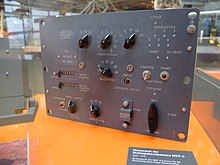
Clementine was a joint space project between the Ballistic Missile Defense Organization and NASA, launched on January 25, 1994. Its objective was to test sensors and spacecraft components in long-term exposure to space and to make scientific observations of both the Moon and the near-Earth asteroid 1620 Geographos.
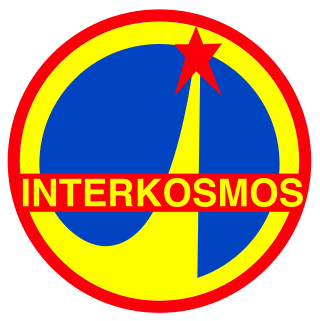
Interkosmos was a Soviet space program, designed to help the Soviet Union's allies with crewed and uncrewed space missions.

Carl Zeiss AG, branded as ZEISS, is a German manufacturer of optical systems and optoelectronics, founded in Jena, Germany in 1846 by optician Carl Zeiss. Together with Ernst Abbe and Otto Schott he laid the foundation for today's multinational company. The current company emerged from a reunification of Carl Zeiss companies in East and West Germany with a consolidation phase in the 1990s. ZEISS is active in four business segments with approximately equal revenue in almost 50 countries, has 30 production sites and around 25 development sites worldwide.
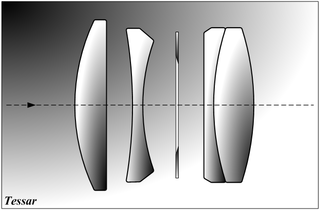
The Tessar is a photographic lens design conceived by the German physicist Dr. Paul Rudolph in 1902 while he worked at the Zeiss optical company and patented by Zeiss in Germany; the lens type is usually known as the ZeissTessar. Since its introduction, millions of Tessar and Tessar-derived lenses have been manufactured by Zeiss and other manufacturers, and are still produced as excellent intermediate aperture lenses.

Soyuz 22 was a September 1976, Soviet crewed spaceflight. It was an Earth sciences mission using a modified Soyuz spacecraft, and was also, some observers speculated, a mission to observe NATO exercises near Norway.

Ernst Karl Abbe was a German businessman, optical engineer, physicist, and social reformer. Together with Otto Schott and Carl Zeiss, he developed numerous optical instruments. He was also a co-owner of Carl Zeiss AG, a German manufacturer of scientific microscopes, astronomical telescopes, planetariums, and other advanced optical systems.
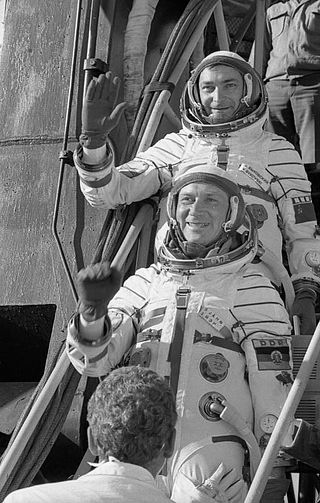
Soyuz 31 was a 1978 Soviet crewed space flight to the Salyut 6 space station. It was the seventh mission to and sixth successful docking at the orbiting facility. The Soyuz 31 crew were the second to visit the long-duration Soyuz 29 resident crew.

Jenoptik AG is a Jena, Germany-based integrated photonics company. The company is listed on the Frankfurt Stock Exchange and is included in the TecDAX stock index.

Moritz von Rohr was an optical scientist at Carl Zeiss in Jena, Germany.
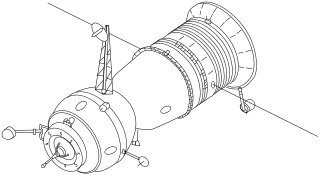
The second generation of the Soyuz spacecraft, the Soyuz 7K-T, comprised Soyuz 12 through Soyuz 40 (1973–1981). In the wake of the Soyuz 11 tragedy, the spacecraft was redesigned to accommodate two cosmonauts who would wear pressure suits at all times during launch, docking, undocking, and reentry. The place of the third cosmonaut was taken by extra life-support systems. Finally, the 7K-T, being intended purely as a space station ferry, had no solar panels, instead sporting two large whip antennas in their place. As a result, it relied on batteries which only provided enough power for two days of standalone flight. The idea was that the Soyuz would recharge while docked with a Salyut space station, but in the event of a docking or other mission failure, the crew was forced to power off everything except communications and life support systems until they could reenter.

Krasnogorsky zavod is a Russian factory in Krasnogorsk near Moscow which specializes in optical technology. Part of Shvabe Holding.

Sentinel-2 is an Earth observation mission from the Copernicus Programme that acquires optical imagery at high spatial resolution over land and coastal waters. The mission's Sentinel-2A and Sentinel-2B satellites were joined in orbit in 2024 by a third, Sentinel-2C, and in the future by Sentinel-2D, eventually replacing the A and B satellites, respectively.
The design of photographic lenses for use in still or cine cameras is intended to produce a lens that yields the most acceptable rendition of the subject being photographed within a range of constraints that include cost, weight and materials. For many other optical devices such as telescopes, microscopes and theodolites where the visual image is observed but often not recorded the design can often be significantly simpler than is the case in a camera where every image is captured on film or image sensor and can be subject to detailed scrutiny at a later stage. Photographic lenses also include those used in enlargers and projectors.

Ludwig Jakob Bertele was a German optics constructor. His developments received universal recognition and serve as a basis for considerable part of the optical designs used today.
The Cartosat is a series of Indian optical Earth observation satellites built and operated by the Indian Space Research Organisation (ISRO). The Cartosat series is a part of the Indian Remote Sensing Program. They are used for Earth's resource management, defence services and monitoring.
IRS-1E was an Earth observation mission launched under the National Natural Resources Management System (NNRMS) programme by Indian Space Research Organisation (ISRO). Sometimes written IRS-P1. The objective of the mission was to develop Earth imagery using instruments carried on board. Due to a malfunction of the launch vehicle, the satellite deviated from its path and plunged into the Indian Ocean.
PRISMA is an Italian Space Agency pre-operational and technology demonstrator mission focused on the development and delivery of hyperspectral products and the qualification of the hyperspectral payload in space.

Gaofen is a series of Chinese high-resolution Earth imaging satellites launched as part of the China High-resolution Earth Observation System (CHEOS) program. CHEOS is a state-sponsored, civilian Earth-observation program used for agricultural, disaster, resource, and environmental monitoring. Proposed in 2006 and approved in 2010, the CHEOS program consists of the Gaofen series of space-based satellites, near-space and airborne systems such as airships and UAVs, ground systems that conduct data receipt, processing, calibration, and taskings, and a system of applications that fuse observation data with other sources to produce usable information and knowledge.

Resurs-P is a series of Russian commercial Earth observation satellites capable of acquiring high-resolution hyperspectral (HSI), wide-field multispectral (MSI), and panchromatic imagery. These spacecraft cost over 5 billion rubles and are operated by Roscosmos replacing the Resurs-DK No.1 satellite.

Soyuz 7K-MF6 is a version of the Soyuz spacecraft and was the second Soviet spacecraft designed for space station flight, a dedicated science mission. Its only crewed flight was conducted in 1976 with Soyuz 22 of the Soyuz programme.

